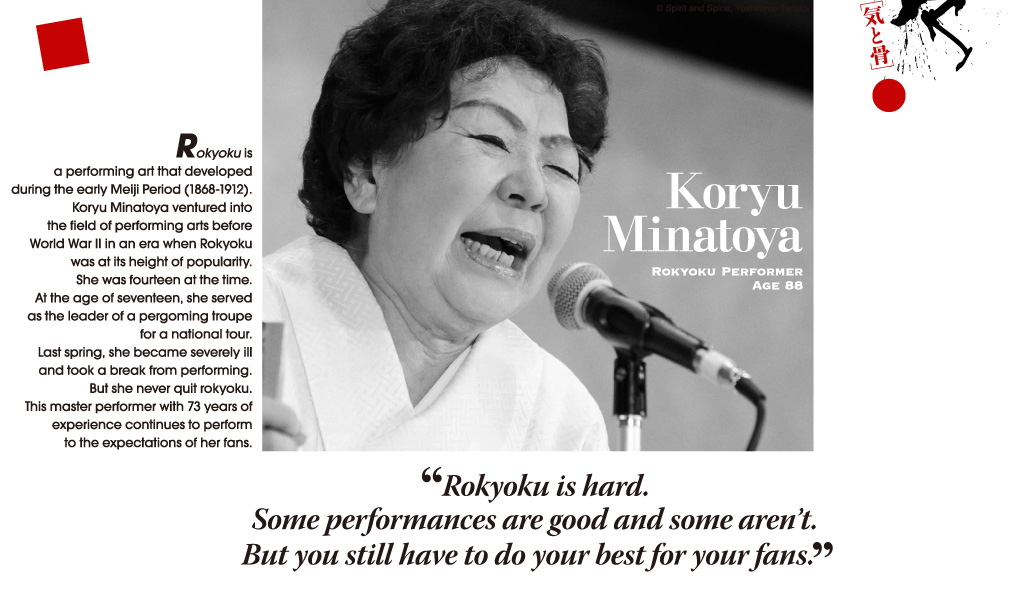The cafe in Shibuya is packed with young people. They have all come this evening to watch a special rokyoku performance. Master Koryu will be up last, and the title of her performance will be Mito Komon Manyuki (Travel sketches of the Vice Shogun, Mito Komon). Her eloquent flow of words, accompanied by the sound of the shamisen (a three-stringed traditional Japanese instrument) played exquisitely by Yuko Tamagawa, a 92-year-old shamisen master, paints the picture of the Edo Period (circa 1603-1868) in a modern space, and the passionate affection that people possess sinks into the listeners’ heart.
Starting in her teens, Koryu traveled on the road for many years from Hokkaido to Kagoshima, serving as the leader of her theatrical troupe. She is proud to say that no other active rokyoku performer spent this much time on the road. During the War, she visited soldiers and continued to visit leprosy facilities, which were required to be quarantined, and prisons even after the war. It is hard to imagine now, but rokyoku had been an extremely popular form of entertainment before the war. After the War, however, it could not be performed without the seal of approval of the occupation army and the conditions of the times were such that enjoying leisure time was not something that was on people’s minds. As a result, rokyoku was in a state of crisis much like other traditional performing arts. Although rokyoku did make a slight revival as private radio programs began airing, before long, the number of fans dropped dramatically along with the spread of television as well as changes in the entertainment world.
Today, the only entertainment hall for performing rokyoku in Tokyo is Mokubatei, which is located in Asakusa. But there is a glimmer of hope. The number of young fans has grown in recent years, as it is apparent when looking out at the audience from the stage. Master Koryu has been blessed with two young pupils who have voluntarily applied to study under her. The performance of Master Koryu, who plays a leading role in preserving rokyoku, which has reentered the spotlight in recent years, while overcoming a severe illness as well the performances of her pupils are a must see.







































































































